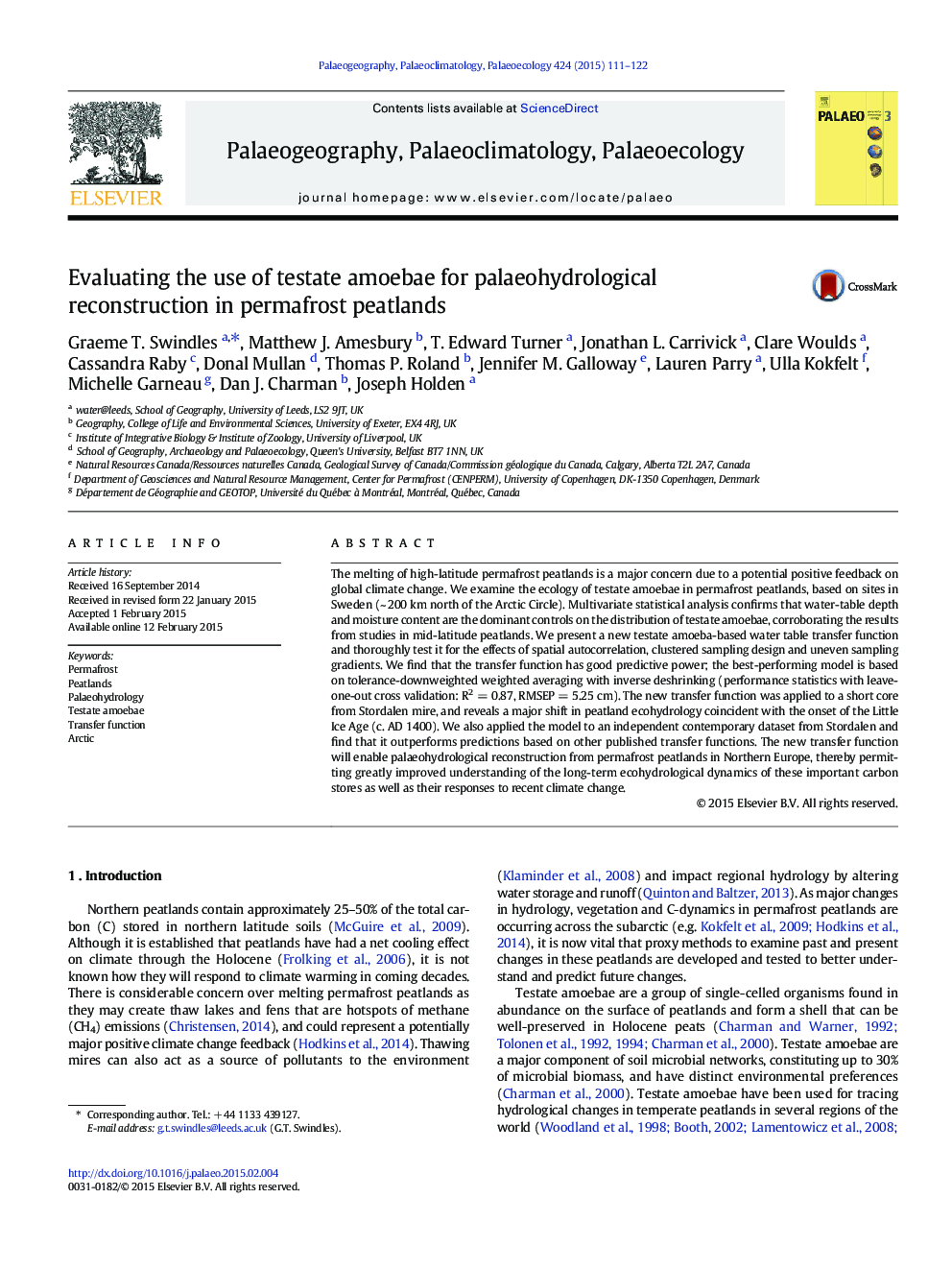| Article ID | Journal | Published Year | Pages | File Type |
|---|---|---|---|---|
| 6349761 | Palaeogeography, Palaeoclimatology, Palaeoecology | 2015 | 12 Pages |
Abstract
The melting of high-latitude permafrost peatlands is a major concern due to a potential positive feedback on global climate change. We examine the ecology of testate amoebae in permafrost peatlands, based on sites in Sweden (~Â 200Â km north of the Arctic Circle). Multivariate statistical analysis confirms that water-table depth and moisture content are the dominant controls on the distribution of testate amoebae, corroborating the results from studies in mid-latitude peatlands. We present a new testate amoeba-based water table transfer function and thoroughly test it for the effects of spatial autocorrelation, clustered sampling design and uneven sampling gradients. We find that the transfer function has good predictive power; the best-performing model is based on tolerance-downweighted weighted averaging with inverse deshrinking (performance statistics with leave-one-out cross validation: R2Â =Â 0.87, RMSEPÂ =Â 5.25Â cm). The new transfer function was applied to a short core from Stordalen mire, and reveals a major shift in peatland ecohydrology coincident with the onset of the Little Ice Age (c. AD 1400). We also applied the model to an independent contemporary dataset from Stordalen and find that it outperforms predictions based on other published transfer functions. The new transfer function will enable palaeohydrological reconstruction from permafrost peatlands in Northern Europe, thereby permitting greatly improved understanding of the long-term ecohydrological dynamics of these important carbon stores as well as their responses to recent climate change.
Related Topics
Physical Sciences and Engineering
Earth and Planetary Sciences
Earth-Surface Processes
Authors
Graeme T. Swindles, Matthew J. Amesbury, T. Edward Turner, Jonathan L. Carrivick, Clare Woulds, Cassandra Raby, Donal Mullan, Thomas P. Roland, Jennifer M. Galloway, Lauren Parry, Ulla Kokfelt, Michelle Garneau, Dan J. Charman, Joseph Holden,
